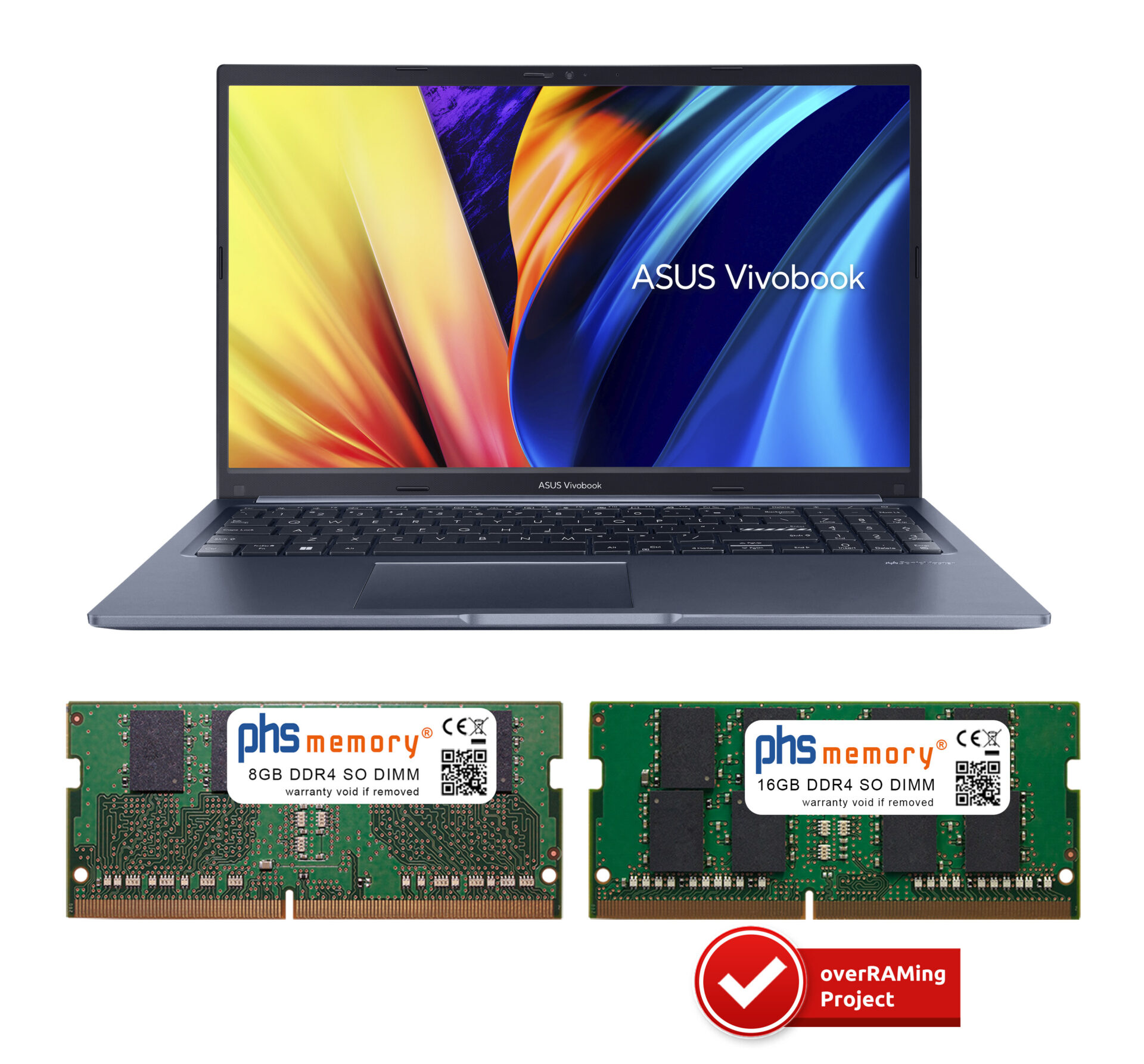Memory Upgrade: Why Expanding RAM is Worthwhile
The memory must have sufficient capacity to provide all active processes with enough memory addresses. When memory is over 100% utilized, the system starts swapping data. This process moves data from active processes, which no longer fit in memory, to virtual memory on the hard drive or SSD. On systems with a mechanical hard drive, this process is even audible. Response times become significantly slower, as accessing the hard drive or SSD takes much longer than accessing fast memory. For efficient operation, it is therefore important to have enough RAM available.
In the Asus VivoBook family, there are over 350 series with exact model names. Knowing the correct VivoBook model is crucial to determining how to expand the memory. The exact model name can be found on the type label on the underside of the device. However, the type label can be difficult to read due to small font size and low contrast with the case color. Alternatively, the software RAMONA can be used to identify the VivoBook data and find compatible memory.
An example from the large VivoBook family is the memory upgrade options on the VivoBook X705MA. There are different models with varying memory configurations. These devices come with 4GB or, in some cases, 8GB of memory. With only 4GB RAM, smooth operation is almost impossible, as the operating system already requires and reserves the majority of the memory. Upgrading to 8GB RAM or even 16GB RAM is recommended. According to Asus, the VivoBook X705MA series supports up to 8GB RAM, though this may become tight if, for example, you want to upgrade to Windows 11. As part of the overRAMing project, we have successfully tested and approved 16GB RAM for VivoBook X705MA systems. These are indeed possible and sensible, even though the official specification only lists 8GB RAM. Many guides already describe how to install Windows 11 on devices that don’t meet all Microsoft criteria (e.g., “removing CPU lock”).

| Series | Slots | Built-in | Max per Manufacturer | Actual Max (OverRAMing) |
| X705MA Series | 1 | no | 8GB | 16GB |
| X712FB Series | 2 | no | 16GB | 64GB |
| X712JA Series | 1 | 4GB / 8GB | 12GB / 16GB | 36GB / 40GB |
Even within the Asus VivoBook X712JA series, there are differences to watch out for. Depending on the device configuration, selecting the appropriate memory and maximum upgrade is crucial.
For example, the Asus VivoBook X712JA-AU158T has a total of 8GB of memory, with 4GB already soldered onboard and another 4GB module installed in the available slot. This can be replaced with an 8GB, 16GB, or 32GB module. Due to the 4GB integrated onboard, a maximum of 36GB (4GB soldered + 32GB replaceable) can be used for this device.
On the other hand, the Asus VivoBook X712JA-AU160T is equipped with 8GB soldered onboard, and the available memory slot is empty. This device can be upgraded with 8GB, 16GB, or 32GB modules, allowing for a maximum of 40GB (8GB soldered onboard + 32GB replaceable).
How to Install Memory in Your Asus VivoBook X705MA
After finding and ordering the appropriate memory, the question arises of how to install it in your Asus VivoBook X705MA notebook. Installing the memory is relatively involved and requires about 45 minutes. The memory is located on the underside of the mainboard, which must be removed to upgrade the memory.
A challenging part of the job is releasing the plastic connectors between the device’s top (keyboard) and the bottom cover. The keyboard and trackpad are connected to the mainboard with ribbon cables. Additionally, the battery, hard drive, ribbon cable connector to the USB ports, antenna cable, connectors for the speakers, and fan cable connector must be detached from the mainboard. The display must also be removed. After loosening two screws, you can remove and flip the mainboard, making the memory slot accessible. Fortunately, this process only needs to be done once to upgrade the VivoBook.
Not all VivoBook notebooks require such a complex memory installation.
After expanding the memory, you can enjoy the improved performance of the notebook and continue using it smoothly.
